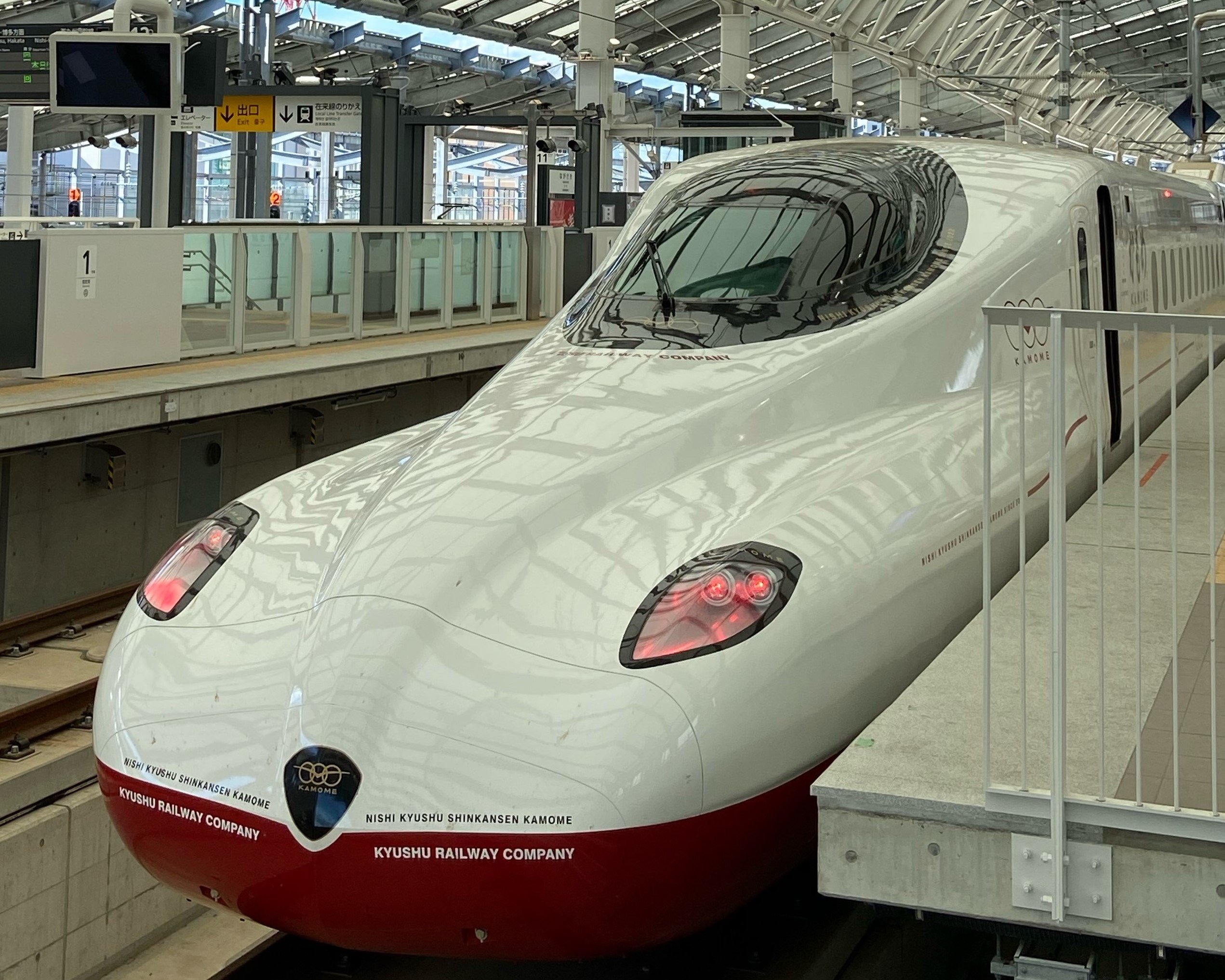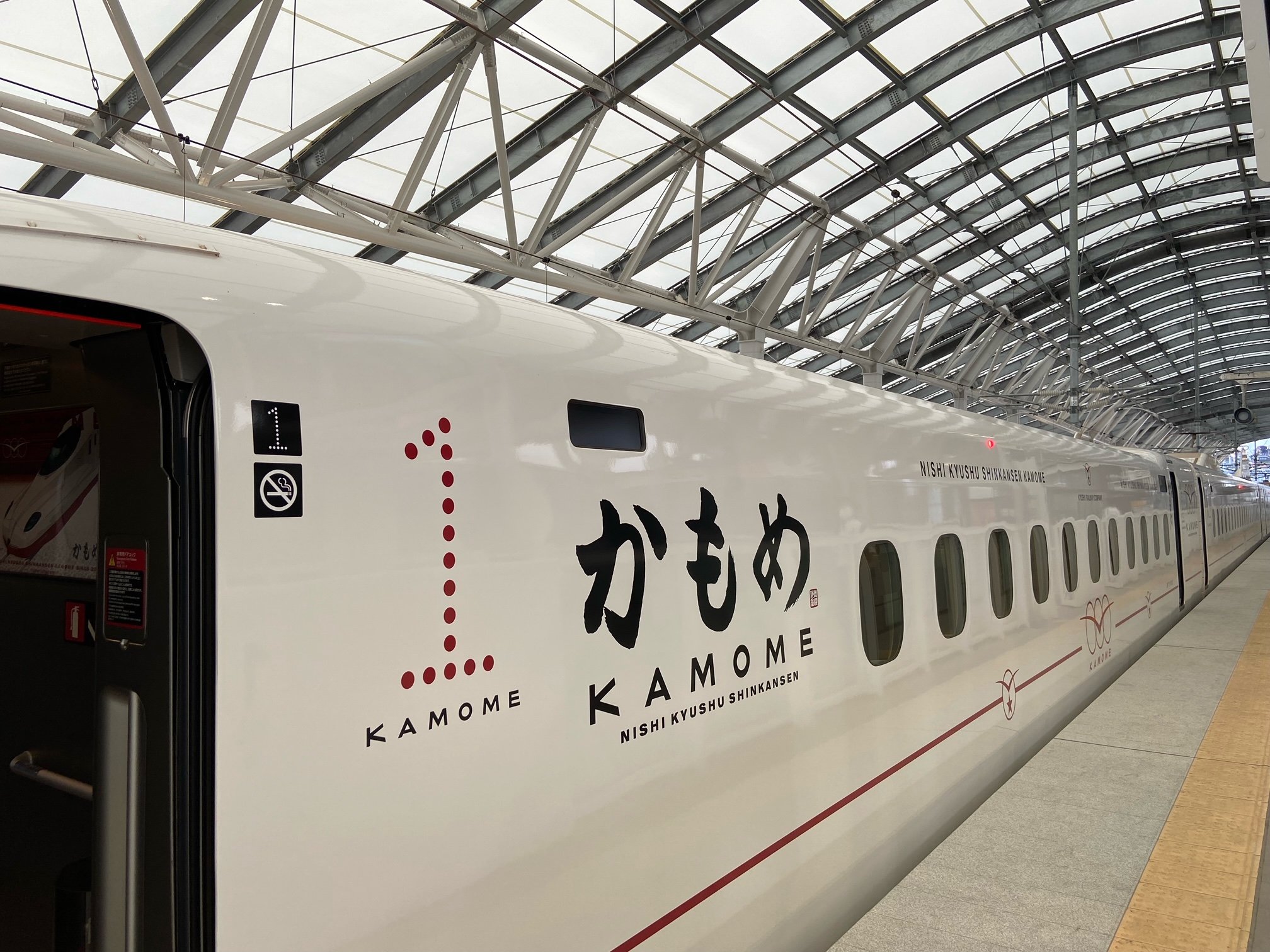
The Nishi-Kyushu Shinkansen opens on September 23, 2022. JR Kyushu, the operator of the line, has been conducting several test-ride events prior to the opining of the line, and IHRA secretariat members have participated in one of them.
The Nishi-Kyushu Shinkansen is the name of the Shinkansen line running between Takeo-Onsen Station and Nagasaki Station on the West Kyushu route (between Fukuoka City and Nagasaki City), which was planned based on the "Nationwide Shinkansen Railways Construction and Improvement Act". The Nishi-Kyushu Shinkansen's nickname is "Kamome (meaning seagull in Japanese)," which has been used for the nickname of trains in this area for a long time. With the opening of the Nishi-Kyushu Shinkansen, Shin-Omura Station and Ureshino-Onsen Station were newly established, bringing the total number of stations to five (Takeo-Onsen, Ureshino-Onsen, Shin-Omura, Isahaya, and Nagasaki).
The 66-km line between Takeo-Onsen Station and Nagasaki Station was built on standard gauge (full standard) track, which is suitable for high-speed running. In addition, the Nishi-Kyushu Shinkansen operates using the "face-to-face transfer system" where passengers change trains at Takeo-Onsen Station on the same platform as conventional limited express trains that operate between Hakata Station and Takeo-Onsen Station. The travel time from Hakata Station to Nagasaki Station took1 hour and 50 minutes on the current JR limited express. After the opening, the shortest time from Nagasaki Station to Hakata Station will be reduced by 30 minutes to 1 hour and 20 minutes by making a face-to-face transfer between the Limited Express Relay Kamome and the Nishi-Kyushu Shinkansen from Hakata Station to Takeo- Onsen Station.
The latest model N700S, which will begin commercial operation on the Tokaido and Sanyo Shinkansen lines in July 2020, has been selected to run on this new line. The N700S is designed as a "standard train" that can be flexibly configured in terms of the number of cars in a train formation by reducing the size and weight of under-floor equipment. In addition, N700S is equipped with the latest technology, including the world's first battery self-propelled system for high-speed trains. Therefore, while the Tokaido and Sanyo Shinkansen trains operate with 16-car trains, the Nishi-Kyushu Shinkansen can operate with 6-car trains to meet the demand.
The exterior of the car body was designed with an original red-and-white design using red, the corporate color of JR Kyushu, the operating entity. The word "KAMOME" is scattered throughout the car body. The calligraphy on the body is written by Mr. Aoyagi, chairman of JR Kyushu and director of IHRA. In the reserved-seat cars No. 1 through No. 3, each car had a different color scheme so that passengers could enjoy the ride no matter how many times they boarded the train. Yellow seats were lined up in the unreserved carriages No. 4 to No. 6, creating a bright atmosphere inside the cars. The seats are comfortable because the seat and backrest recline in tandem. In addition, each seat, both reserved and unreserved, is equipped with a power outlet, making it comfortable for business travelers. The shortest time between Takeo-Onsen Station and Nagasaki Station is 23 minutes, and during the test ride, the experience was quick. From Nagasaki Station to Takeo-Onsen Station, the train window on the left has no end of sights to see, including Nagasaki Airport with its runway in the waters of Omura Bay, and the Omura rail yard nicknamed "Kamome's Nest".
The area around Nagasaki terminal station is undergoing large-scale redevelopment on a scale. In Nagasaki station, souvenirs tied to the Nishi-Kyushu Shinkansen are lined up in shops. JR Kyushu is taking the opportunity of this opening to enhance the effects of the opening on both daily life and tourism. JR Kyushu is working to improve the convenience of life for residents and create new attractive tourist routes in order to expand the effects not only along the line but also to other areas in Saga and Nagasaki Prefectures. The opening of the Nishi-Kyushu Shinkansen is expected to connect the West Kyushu region with the Fukuoka area, various areas in the Chugoku region, and the Kansai area, thereby expanding exchanges. The line is also expected to connect with the Kyushu Shinkansen (Hakata station to Kagoshima-Chuo station) that opened in 2004 in anticipation of the future full service, contributing not only to the promotion and development of the Western Kyushu region, but also has the significance of contributing to the revitalization of the entire Kyushu region and ultimately Japan.
The Nishi-Kyushu Shinkansen "Kamome" will take over the role of "Kamome", which was active before World War II, and the "Kamome", a limited express train that was active throughout the subsequent era. The Nishi-Kyushu Shinkansen will be surely become the key to support people's transportation as well as to bring out the charm of the West Kyushu region in the new era.
